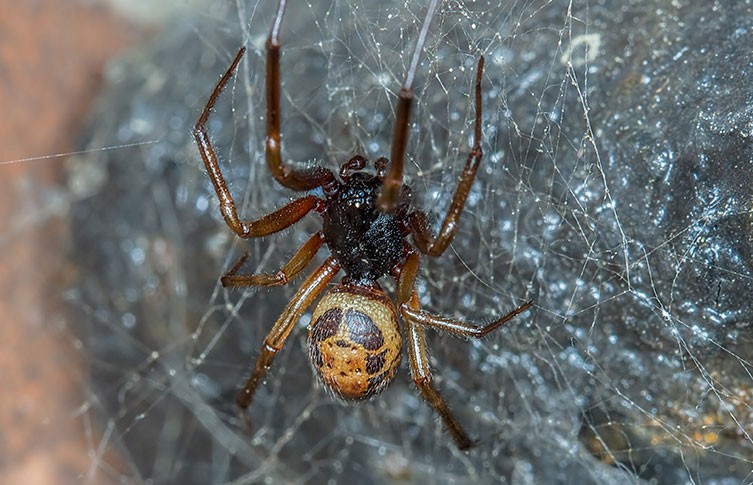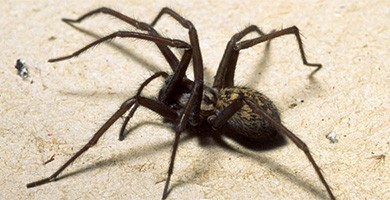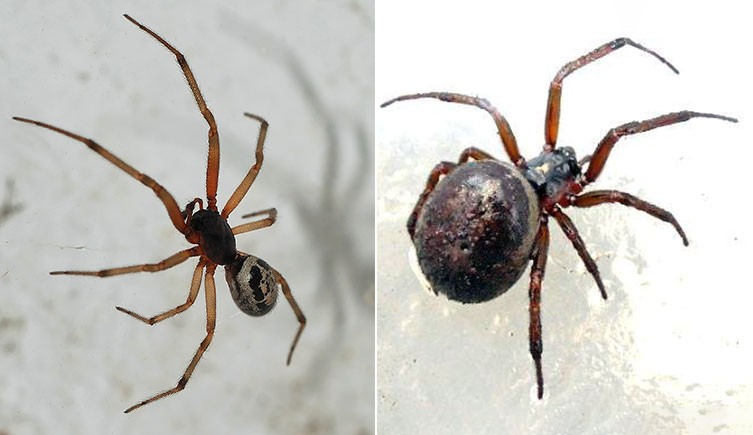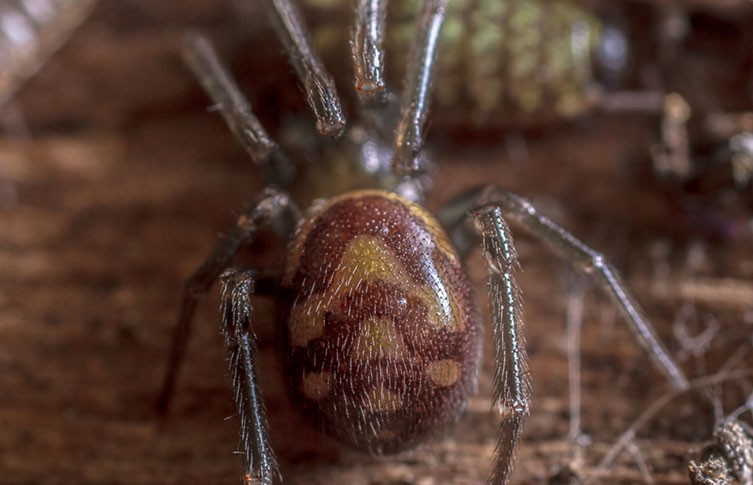How Dangerous Are False Widow Spiders?Each autumn, reports resurface of false widow spiders taking up residence in homes across the United Kingdom, their eight-legged silhouettes appearing uninvited in domestic corners.
Though their appearance closely resembles that of the more infamous black widow, the threat posed by false widows is comparatively minor. At worst, they may deliver a small, mildly irritating bite—far from the peril often implied by sensational headlines.

While it may seem that false widows make a concerted dash indoors as temperatures begin to drop, they are, in fact, present year-round. Cooler weather may encourage their movement from outdoor habitats to warmer interiors, but many have likely remained undetected in secluded household crevices for months.
Three species of false widow spiders are commonly encountered in and around British homes: Steatoda bipunctata (the rabbit hutch spider), Steatoda grossa (the cupboard spider), and Steatoda nobilis (the noble false widow).
Among them, Steatoda nobilis is the largest. Adult males can reach body lengths of up to 10 mm, while females may grow as large as 14 mm. This species is not native to the UK; it is believed to have arrived from the Canary Islands in shipments of bananas during the late 19th century. From initial populations along the south coast, the noble false widow has since expanded its range northward, a spread likely facilitated by rising global temperatures. In contrast, S. bipunctata and S. grossa are indigenous to Britain.
False widow spiders frequently feature in media stories related to spider bites, particularly in early autumn. However, confirmed envenomations remain rare. Of the three main species, only the cupboard spider and noble false widow possess the size and jaw strength required to pierce human skin. These spiders are not inherently aggressive; bites usually occur only when they are inadvertently provoked through direct contact.
In the uncommon instances where a noble false widow does bite a human, the sensation is often likened to that of a wasp sting. In rarer cases, mild systemic symptoms may occur, such as short-term malaise.

What Do False Widow Spiders Look Like?
Abdomen Markings:
All species exhibit distinctive patterns on their abdomens. Typically, a pale or whitish band encircles the front of the abdomen near the cephalothorax, accompanied by various species-specific markings. However, these patterns can be inconsistent, particularly in mature females, where they may appear faded or be entirely absent.
Abdomen Shape:
Females possess large, rounded, and glossy abdomens. In contrast, males have smaller, less bulbous abdomens with more clearly defined markings.
Web Structure:
Their webs are irregular tangles of silk threads, often dense at the centre if left undisturbed—an architectural signature of the Steatoda genus.
What Does a False Widow Look Like?
False widow spiders—members of the genus Steatoda—are frequently mistaken for the more dangerous black widows of the genus Latrodectus, owing to their similar dark, globular bodies. This superficial resemblance often leads to overstated concerns regarding their danger.
The term “false widow” refers to six species of Steatoda that are now permanent residents of the UK. The three most commonly encountered are:
- The rabbit hutch spider (Steatoda bipunctata)
- The cupboard spider (Steatoda grossa)
- The noble false widow (Steatoda nobilis)
Additionally, the Mediterranean false widow (Steatoda paykulliana) occasionally arrives in the UK via imported produce, though it does not establish permanent populations.
Each species is distinguishable by its size, coloration, and unique abdominal markings.

Noble False Widows
The noble false widow is the most frequently reported false widow species in Britain. Females, the larger of the sexes, typically measure between 7 and 14 mm in body length.
First recorded in the UK during the 1870s, likely as a maritime stowaway from Madeira and the Canary Islands, S. nobilis remained relatively obscure until the 1980s. Since then, its presence has proliferated, with stable populations now established throughout much of southern England and gradually extending further north.
These spiders typically suspend their webs at heights of 1.5 metres or more to better intercept flying insects. Indoors, they favour warm, undisturbed areas such as kitchens and conservatories. Like all Steatoda species, their webs are disordered tangles of silk.The noble false widow’s distinctive body pattern is often likened to a skull—a feature that, perhaps unfairly, contributes to its sinister reputation.
False Widow Spider Guidance
About False Widow Spiders
In the United Kingdom, six species of the genus Steatoda are collectively referred to as false widow spiders, so named due to their resemblance to the more infamous black widow spider. Of these, all but Steatoda nobilis are native to the region.
Steatoda nobilis, commonly known as the Noble False Widow Spider, was inadvertently introduced to the UK over a century ago from the Canary Islands and Madeira. Initially established along the southern coast, their population has steadily expanded northward over the past 25 years, a trend likely influenced by milder winter temperatures.
The Noble False Widow is easily identified by its bulbous, brownish abdomen, often marked with cream-colored patterns that some interpret as skull-like. Its legs are slender and tinged with reddish-orange hues. Only the female of the species possesses fangs capable of penetrating human skin, and they can grow up to 32mm in length, including their legs.

Where to Find False Widow Spiders
In the UK, these spiders typically inhabit sun-facing walls, conservatories, and outbuildings such as toilet blocks, where they construct irregular, scaffold-like tangle webs.
Bite Information
Bites from the Noble False Widow Spider are infrequent and generally occur only when the spider is provoked—either through rough handling or by becoming trapped against the skin beneath clothing.
Although likely the most venomous spider species native to the UK, the effects of a Noble False Widow bite are usually no more severe than those of a bee or wasp sting. While some individuals may experience localized throbbing pain, swelling, and tingling in the fingers, such symptoms tend to be mild and self-limiting.
Reports of more serious reactions, often sensationalized by the media, are typically attributed to allergic responses or secondary infections rather than the venom itself. Importantly, there have been no recorded fatalities in the UK linked to spider bites, including those from the Noble False Widow.
If bitten by a spider—or stung by an insect—it is essential to promptly cleanse the area using antiseptic or soap and water to minimize the risk of infection. Applying a cloth or flannel soaked in cold water can help reduce swelling. Refrain from scratching the site, as this may introduce bacteria and exacerbate inflammation. Should the wound become significantly swollen, blistered, or begin to exude pus, medical attention should be sought, as these may be signs of infection.
Dealing with Spiders in the Home
If you encounter a spider within your home that you suspect to be a Noble False Widow and wish to remove it, do so with caution. It is advised not to handle the spider directly with bare hands, as it may bite in self-defence.
